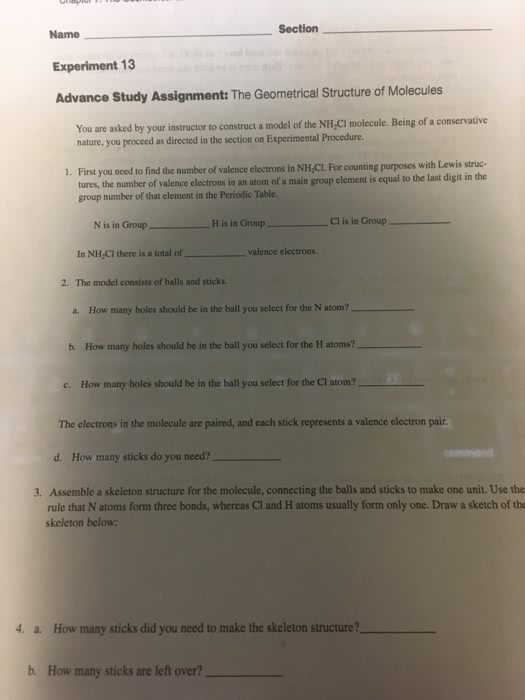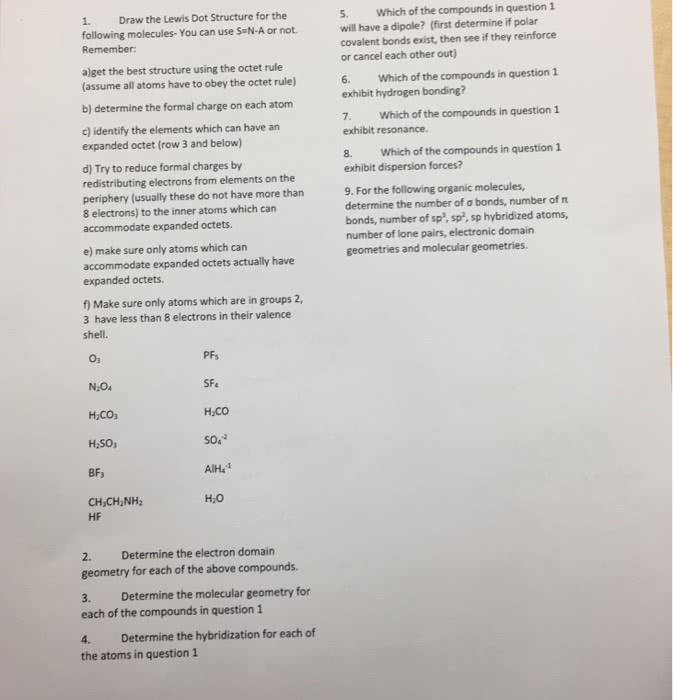CHEM1011 Lecture Notes - Lecture 13: Electron Configuration, Lone Pair, Lewis Structure

Lecture 13: Lewis Structures
Lewis structure steps
1. Arrange the atoms: place the least electronegative atoms (not H because it can only
form one bond) in the centre
2. Count the total number of valence electrons: remember to add or subtract e- for anions
and cations (add up valence electrons for all)
3. Allocate two electrons between each pair of atoms which are assumed to be covalently
bonded
4. C, N, O and F must end up with 8 electrons: i.e. the valence shell has a (Ne) electron
configuration
5. Other atos e.g. P, S, Cl… ay have 8,, electros: the valece shell of period
atoms may contain up to 18 electrons but rarely becomes full (period 3 can cope with
more- there is more space)
Hydrides- Ch4
1. C is at the centre
2. Total number of valence electrons= 4 (C) + 4x1 (H) = 8
3. Four C-H bonds require 4 x 2 electrons
4. Electrons remaining = 8 (valence)- 8 (bonding) = 0
5. Carbon has octet: 4x2 electrons (in bonds)
NH4+
1. N is at the centre
2. Total number of valence electrons: 5 (N) + 4x1 (H) -1 (positive charge) = 8
3. Four N-H bonds require 4x2 electrons
4. Electrons remaining = 8 (valence) – 8 (bonding) = 0
5. Nitrogen has octet
More rules for Lewis structures
6. Use remaining valence electrons to form lone pairs: start with surrounding atoms to
ensure that they have 8 electrons (except H) and if there are still electrons remaining,
place them on the centre atom
find more resources at oneclass.com
find more resources at oneclass.com



